By : Nikon School Blog | 29 Jul, 2016 |
Meeting needs, exceeding expectations – that has been the vision of Nikon since 2007. In course of exceeding expectations of the photography world for almost a century, Nikon has created many firsts in the imaging industry. Let’s look back at some of the imaging technologies that Nikon gifted the photography world.
1959 is probably the most important year in the history of Nikon’s imaging business in which the very first Nikon SLR – the iconic Nikon F was launched. This was the great beginning of the Nikon SLR range that was to follow in the coming years, later evolving into the game changing Nikon DSLR line up. With the Nikon F, everything was new, including the world’s first 100% frame coverage in SLRs.
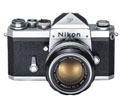
After many innovations to the F series, centre-weighted metering, was first introduced in 1967 with the Nikon F Photomic TN.
In 1980 Nikon revolutionized the way cameras metered exposure by launching the world’s first built in TTL (through the lens) exposure in the Nikon F3 (right) professional SLR.
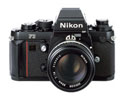
Action photographers got what they had long dreamt of when in 1982 Nikon launched the FM2 (below left) with the then fastest shutter speed of 1/4000 second. This was followed in 1988 with the launch of Nikon F801 (below right), with the world’s first shutter speed of 1/8000 second.
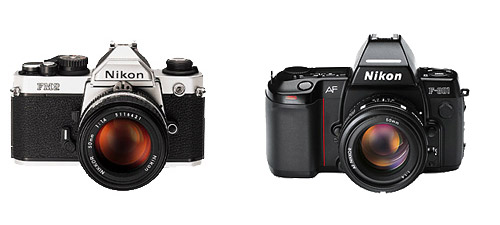
The matrix system which has become the most trusted metering system in photography was introduced for the first time in the world with the Nikon FA in 1983. This system was later on adopted by almost all camera brands and is still the default metering system in most modern DSLRs.
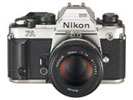
For low light action shooters, high speed flash sync was much needed. In 1983, Nikon addressed this with the launch of Nikon FE2, with flash synchronization at 1/250 second. Another world’s first in flashes was the launch of Nikon Speedlight SB24 in 1988 with the first TTL-BL mode for balanced background exposure with flash.
Most modern lenses have CPU contacts that transmit data to the camera for autofocus and metering. The world’s first CPU lens was the NIKKOR 50mm f/1.8, launched in 1986. CPU lenses became a standard worldwide by the late 90s.
Not many would recognize the significance of the launch of Nikon TW20QD in 1989, but this compact film camera, for the first time in the world offered red-eye reduction. This feature was very popular and it became a standard in all cameras very soon.
In 1992, Nikon took photography to another level, this time deeper, with the NIKONOS RS, world’s first underwater Auto-Focus SLR camera.
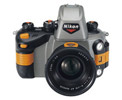
Taking zooming to an unearthly level, Nikon launched the world’s first 1700mm lens with the gigantic Zoom-Nikkor 1200-1700mm f/5.6-8P IF-ED, which weighed a whopping 16 kgs and was specifically designed to cover school baseball in Japan.
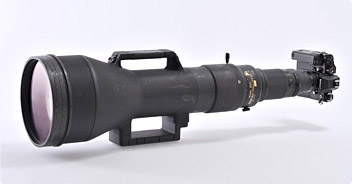
Modern day photographers cannot imagine life without VR. Nikon launched this game changing technology in 1994 with the film compact Nikon Zoom 700VR, which used the lens shift (optical) method for the first time in the world. Of course this went on to become one of the most useful and widely adapted technologies in photography.
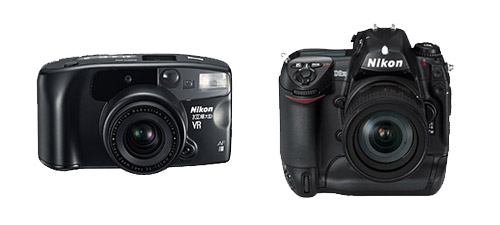
In 2003, Nikon revolutionized the world of flash photography with the introduction of the D2H, world’s first DSLR with creative lighting system. Using the camera as a commander, Nikon speedlights could be controlled and fired wirelessly for amazing creative effects.

Innovations continued to come from Nikon throughout the 2000s. In 2005, the world’s first face priority autofocus was launched with the Nikon COOLPIX 7900; and as early as in 2005, Nikon took a futuristic step by launching COOPLIX P1, the world’s first camera with built-in wifi.
Announcing its entry into the movie world, the Nikon D90 heralded a new era in 2008. It was the world’s first DSLR with high definition (HD) movie. Since then, Nikon has constantly enhanced the movie feature in its DSLRs, culminating in the 4K capabilities of its current high end line up.
.jpg)
As a highly trusted imaging equipment manufacturer, Nikon has constantly introduced new technology to make capturing moments easier and more effective. These include a lot of innovations apart from those mentioned above. Surely, Nikon would continue ‘meeting needs and exceeding expectations’ of the photography world, and be ‘at the heart of the image’ always.
Surely, Nikon would continue 'meeting needs and exceeding expectations' of the photography world, and be 'at the heart of the image' always.